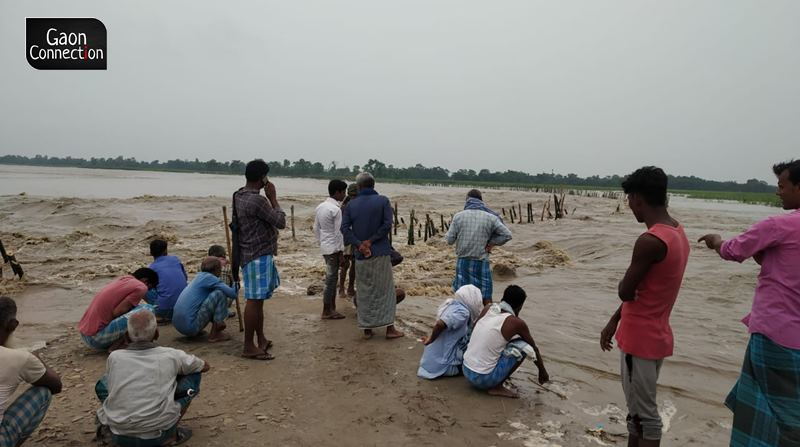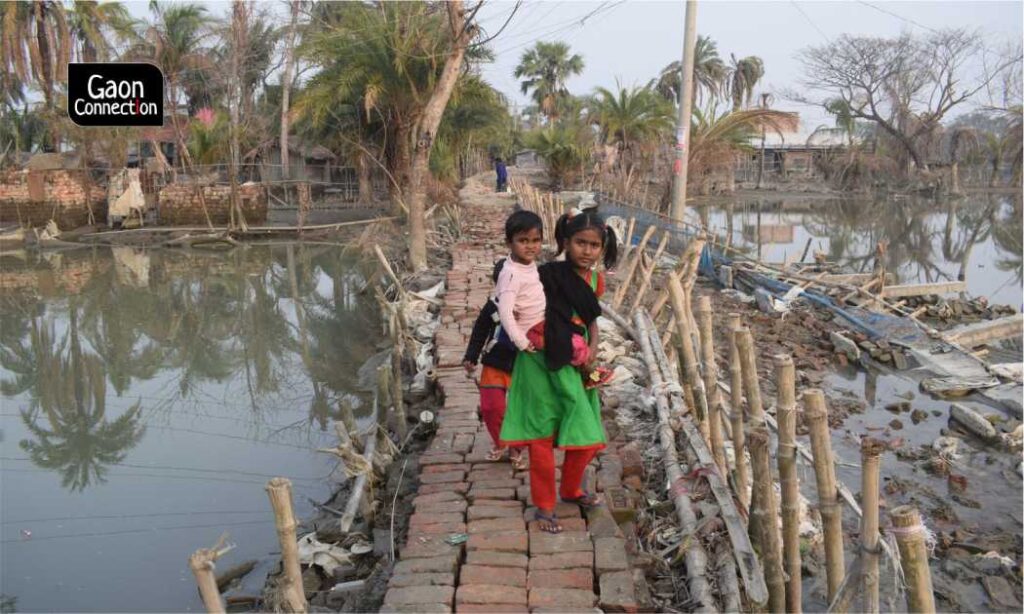The much-awaited scientific report of the United Nations’ Intergovernmental Panel on Climate Change (IPCC) on how human-caused emissions are leading to fundamental planetary changes to the climate system has been released today on August 9. The Summary for Policymakers of the Working Group I contribution to the Sixth Assessment Cycle (AR6), titled Climate Change 2021: the Physical Science Basis, paints a grim scenario for India.
As per the new report, commonly referred to as WGI (Working Group I), globally, the planet will warm by 1.5°C in all scenarios. Even in the most ambitious emissions pathway, it will reach 1.5°C in the 2030s, overshoot to 1.6°C, before the temperature declines to 1.4°C at the end of the century.
Warming over India is projected to track the global average and the country is expected to see an increase in frequency and severity of hot extremes, warns the IPCC report, which has projected an increase in annual mean precipitation. Monsoon rainfall is also projected to increase.
As per the report, the increase in rainfall will be more severe over southern parts of India. On the southwest coast rainfall could increase by around 20 per cent, relative to 1850-1900. If the planet warms by 4°C, India could see about a 40 per cent increase in precipitation annually, informs the WGI report.

This is not all. Monsoon precipitation is projected to increase in the mid- to long term over South Asia. Globally, severe, heavy precipitation events that now occur on an average once every ten years, are projected to nearly double in frequency at 2°C (1.7 times in a ten-year period). At 4°C, the likelihood of these events will jump to 2.7 times in a ten-year period, warn the authors of the report.
This WGI report released today is the first biggest update report of the IPCC (Working Group I (AR6 WGI) on the state of knowledge on climate science since the release of AR5 in 2014. The report covers topics like extreme weather, human attribution, the carbon budget, feedback cycles, and charts the future state of the climate.
The latest report contains a much-improved understanding of how humans are unequivocally responsible for the climate changeobserved since pre-industrial times. There is no doubt that human activities have warmed the planet and that rapid and widespread changes have occurred, and that some impacts are now locked in, warn the authors. The report concludes that the planet will continue to experience unprecedented change without drastic, deep, emissions reduction.
Commenting on the new report, Roxy Mathew Koll, Senior Scientist, Indian Institute of Tropical Meteorology (IITM), and Lead Author, IPCC SROCC (Special Report on the Ocean and Cryosphere in a Changing Climate), said: “Previous IPCC reports have already demonstrated that the climate is changing due to human made greenhouse gas emissions. The most important point from the IPCC AR6 report is that the mitigation and adaptation strategies submitted by nations, known as Nationally Determined Contributions or NDCs, through the Paris Agreement are insufficient to keep global surface temperature increase within 1.5°C or even 2°C limit.”
According to Koll, with the global mean temperature rise now going above 1°C, India is at a crucial juncture where the country is already facing increasing extreme weather events such as cyclones, floods, droughts and heatwaves. “Climate projections unanimously show that all these severe weather conditions will become more frequent and intense with temperatures going up since we humans are not sufficiently curbing the emissions,” the climate scientist warned.
Unprecedented rate of warming
Human influence has warmed the climate at a rate that is unprecedented in at least the last 2,000 years, says the WGI report. In 2019, atmospheric carbon dioxide (CO2) concentrations were higher than at any time in at least two million years and concentrations of methane and nitrous oxide, both significant greenhouse gases (GHGs), were higher than at any time in at least 800,000 years.
Authors of the recent report warn that the rate of warming is speeding up: global surface temperatures increased faster since 1970 than in any other 50-year period over at least the last 2,000 years.
Human-caused emissions are responsible for almost the entirety of global warming, the report stresses.

Increased rainfall in India
For the first time, the AR6 report also provides in detail regional assessment of climate change that helps regional climate assessments, adaptation and other decision making. There are five types of scenarios that have been used to frame the projected changes of the future.
“On an average basis, moderate and heavy rainfall is projected to increase and at 1.5 degree Celsius warming, heavy rainfall events will increase further. However, there isn’t much consensus among the models as change in internal variabilities are dominating but we can expect an increase in precipitation by the end of the 21st century,” said Swapna Panickal, scientist, IITM, Pune.
The scientist went on to say that “in the near term of 20-30 years, we aren’t seeing much increase in the rainfall beyond the internal variability change, but both annual as well as the summer monsoon precipitation will increase by the end of the 21st century.”
According to her, while there isn’t much model agreement on the changes in the heavy precipitation events, we can definitely say that hot extremes are projected to increase, and cold extremes are projected to decrease in the 21st century.

Commenting on the recent report, Ulka Kelkar, Director, Climate Program, World Resources Institute India, said: “This new report comes amid consternation over extreme weather despite 30 years of warnings from the IPCC. For India, the predictions in this report mean people labouring in longer and more frequent heat waves, warmer nights for our winter crops, erratic monsoon rains for our summer crops, destructive floods and storms that disrupt power supply for drinking water or medical oxygen production.”
Warming Indian Ocean and rising sea level
With 7,517 kilometres of coastline, India will face significant threats from rising seas. Across six Indian port cities – Chennai, Kochi, Kolkata, Mumbai, Surat and Visakhapatnam – 28.6 million people will be exposed to coastal flooding if sea levels rise 50 centimetres (cm), previous studies have warned. The assets exposed to flooding will be worth about US$4 trillion.
The WGI report also notes that the Indian Ocean is warming at a higher rate than the global oceans. Half of the sea level rise is contributed by the thermal expansion, hence sea level over the Indian Ocean region is also rising.
“The global mean sea level is rising at a rate of around 3.7 millimetre per year, that is estimated between 2006-2018. At 1.5 degrees, the sea temperature is expected to increase by one degree. So, in accordance with that, the global sea level and the Indian Ocean sea level is also projected to rise at a similar rate,” said Panickal.
The new IPCC report concludes that global mean sea levels will continue to rise over the 21st century, even in the lowest emissions scenarios.
“The assessment yet again highlights the unsettling pace of global warming and climate change, this time with even more confidence and scientific evidence. It is high time that policy makers and negotiators deliver on the promises made to future generations almost three decades back,” said Vaibhav Chaturvedi, Fellow, Council for Energy Environment and Water (CEEW), New Delhi.
Heatwaves, melting glaciers in Hindu Kush Himalayas
This WGI report has been divided into 11 regions. It has regions like Asia, Africa, Australia, etc. According to the Asia region section, marine heatwaves will continue to increase and fire weather seasons will lengthen and intensify, particularly in North Asia regions.
Heatwaves and humid heat stress will be more intense and frequent during the 21st century, warn the authors of the report.
Also Read: Nepal’s forest fires under control, but peak wildfire season has just begun
Glacier runoff in the Asian high mountains will increase up to mid-21st century, and subsequently runoff may decrease due to the loss of glacier storage.
During the 21st century, snow covered areas and snow volumes will decrease in most of the Hindu Kush Himalayan, and snowline elevations will rise and glacier volumes will decline, says the WGI report. This is worrisome because glaciers in the Hindu Kush Himalaya Region are a crucial water supply for the 240 million people who live in the region, including 86 million Indians.
Various scientific studies have documented that the glaciers such as in the Lahaul-Spiti region of western Himalaya have been losing mass since the start of the 21st century, and if emissions do not fall, glaciers in the Hindu Kush Himalaya would decline by two-thirds, thereby threatening the water security of millions in the region.

“The science is clear, the impacts of the climate crisis can be seen around the world and if we don’t act now, we will continue to see the worst effects impact lives, livelihoods and natural habitats,” said Alok Sharma, a British politician, who is serving as President for COP26 (26th UN Climate Change Conference of the Parties).
According to Chaturvedi, vulnerable countries should create their own climate risk atlas, map their vulnerable population and invest in their adaptive capacities. At the same time, mitigation actions have to be ramped up even further. Coal use has to be phased out decisively in this decade, he said.
The Working Group I (AR6 WGI) report – finalised and approved by 234 authors and 195 governments – is the biggest update of the state of knowledge on climate science since the release of the IPCC’s AR5 in 2014, and its landmark 1.5 Special Report.
The WGI release follows a two-week long plenary session held virtually from July 26 to August 6, 2021, in which the report was scrutinized line-by-line for approval by government representatives in dialogue with report authors.
The first-order draft of the WGI report had 23,462 review comments from 750 expert reviewers, the second-order draft got 51,387 review comments from governments and 1,279 experts, and the final government distribution of the SPM saw over 3,000 comments from 47 governments. Over 14,000 scientific papers are referenced in the report.
Read the new IPCC report here.
Also Read: Uttarakhand: The Himalayan state is besieged by extreme floods and increased droughts



















